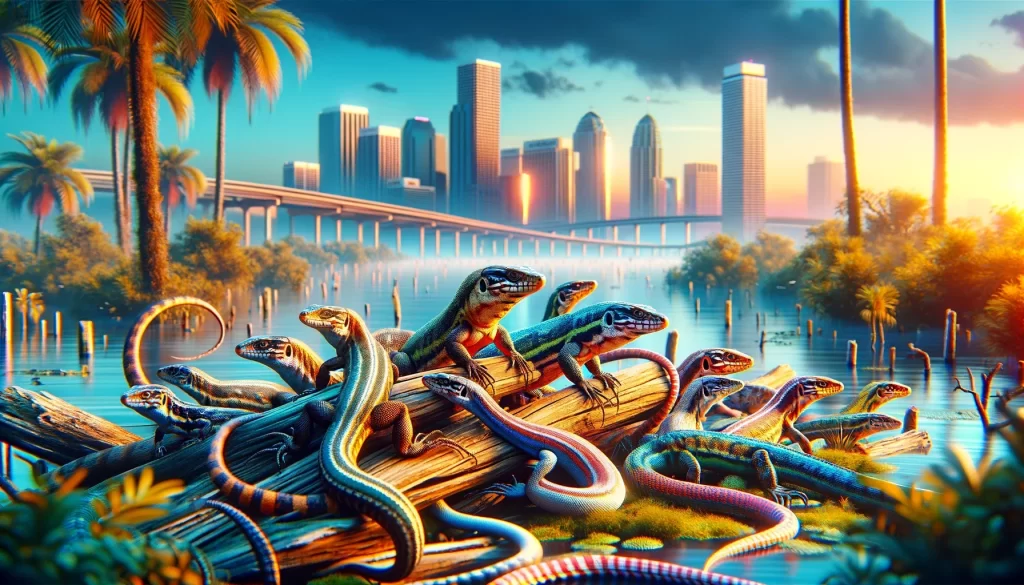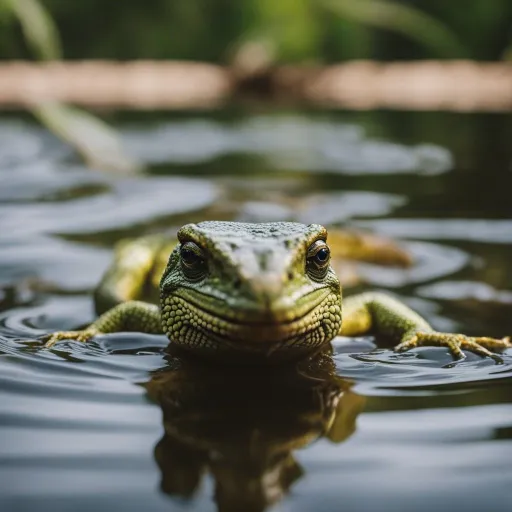Ever wondered what lizards munch on in the scorching desert? Well, the fascinating world of these reptiles’ dietary habits is about to be unveiled.
From insects to vegetation, lizards showcase an array of food preferences that allow them to adapt and thrive in harsh desert environments.
Discover the surprising and diverse diet of desert-dwelling lizards as we explore the culinary choices that keep these creatures at the top of their game.

Lizards in the Desert
Lizards are a fascinating group of reptiles that have successfully adapted to various environments, including the harsh conditions of the desert.
In this article, we will explore the adaptations of lizards in the desert and the importance of understanding their diets.
Adaptations of Lizards in the Desert
Desert dwelling lizards have evolved several unique adaptations that enable them to survive in extreme arid environments.
One of the most notable adaptations is their ability to conserve water. Lizards have developed specialized skin that helps reduce water loss through evaporation, allowing them to thrive in areas with limited water sources.
Additionally, their kidneys are highly efficient at reabsorbing water, further minimizing water loss.
Another adaptation is their behavior in response to temperature fluctuations. Desert lizards exhibit thermoregulatory behaviors such as basking in the sun to increase body temperature and seeking shade or burrows to cool down.
These behaviors help them maintain optimal body temperatures, allowing them to remain active even in the scorching desert heat.
Importance of Understanding Lizard Diets
Understanding the diets of lizards in the desert is crucial for several reasons. Firstly, it allows us to gain insights into the complex ecological relationships within desert ecosystems.
Lizards, as both predators and prey, play important roles in the food web, impacting the abundance and diversity of other species.
Secondly, studying lizard diets helps us understand the adaptations and feeding strategies they employ to survive in resource-limited environments.
By unraveling the intricacies of their diets, we can gain valuable knowledge about how these reptiles have evolved to thrive in harsh desert conditions.
Lastly, knowledge of lizard diets is essential for conservation efforts. Changes in lizard diets can indicate shifts in ecosystem dynamics and may serve as early warning signs of environmental disturbances.
By monitoring their diets, scientists can better assess the impacts of climate change and habitat degradation on lizard populations.
Herbivorous Lizards
Herbivorous lizards primarily feed on plant material, obtaining their energy and nutrients from vegetation.
Despite the limited plant resources in the desert, some lizards have adapted to survive solely on a plant-based diet.
Plant Food Sources
In the desert, herbivorous lizards rely on a variety of plant food sources. Some feed on leaves, fruits, flowers, and seeds, while others consume the tender shoots of desert plants.
Lizards often target succulent plants with high water content, as these provide both hydration and nutrition in the arid environment.
Examples of Herbivorous Lizards
One example of a herbivorous lizard found in desert regions is the desert iguana (Dipsosaurus dorsalis).
This lizard feeds on a range of desert plants, including cacti, shrubs, and flowers. Another notable herbivorous lizard is the chuckwalla (Sauromalus spp.), which primarily feeds on the leaves, flowers, and fruits of various desert plants.
Insectivorous Lizards
Insectivorous lizards predominantly feed on insects and other invertebrates. These lizards play a vital role in controlling insect populations in the desert ecosystem.
Types of Insects Eaten
Desert-dwelling insectivorous lizards consume a wide range of insects, including ants, beetles, grasshoppers, termites, and spiders.
They have adapted to locate and capture their prey efficiently, taking advantage of the abundance of insect life in the desert.
Hunting Techniques
To catch their insect prey, lizards utilize various hunting techniques. Some lizards, such as the collared lizard (Crotaphytus spp.), employ an ambush strategy.
They remain motionless until an unsuspecting insect comes within striking distance, then quickly pounce on their prey.
Other lizards, like the horned lizard (Phrynosoma spp.), use their specialized jaw morphology to capture and swallow ants with remarkable speed.
Examples of Insectivorous Lizards
The leopard gecko (Eublepharis macularius) is a common insectivorous lizard found in desert habitats. This gecko feeds on a variety of insects, including crickets and mealworms.
Additionally, the desert spiny lizard (Sceloporus magister) is another insectivorous species that feeds on grasshoppers, beetles, and various arthropods.
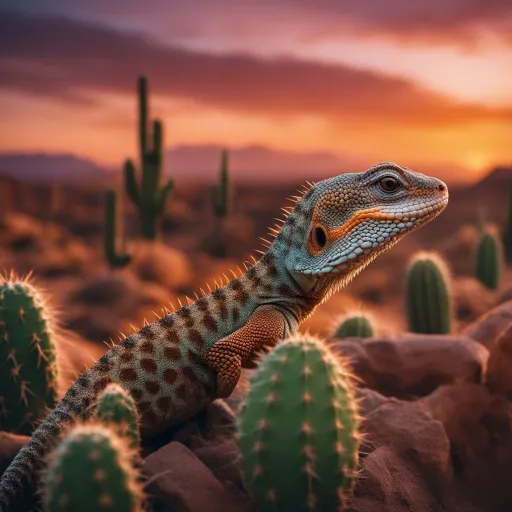
Carnivorous Lizards
Carnivorous lizards are adept hunters that primarily prey on other vertebrates, such as small mammals, birds, reptiles, and even other lizards.
These predatory lizards have evolved a range of hunting strategies to capture their prey.
Prey Sizes and Types
Carnivorous lizards in the desert have diverse diets, consuming prey of various sizes and types.
Some species, like the Gila monster (Heloderma suspectum), primarily feed on small mammals, while others, such as the desert monitor (Varanus griseus), prey on birds, reptiles, and even eggs.
Ambush and Pursuit Hunting Strategies
Carnivorous lizards employ different hunting strategies depending on their size and habitat. Some, like the collared lizard, use an ambush technique.
They patiently wait for their prey to come within striking distance and then swiftly attack. Other lizards, such as the desert monitor, are active hunters that pursue their prey until capture.
Examples of Carnivorous Lizards
The desert monitor, found in arid regions of northern Africa and the Arabian Peninsula, is an example of a carnivorous lizard.
It feeds on a variety of prey, including small mammals, birds, and reptiles. Another well-known carnivorous lizard is the chuckwalla, which occasionally consumes smaller lizards and insects in addition to its primarily herbivorous diet.
Omnivorous Lizards
Omnivorous lizards have a flexible diet, consuming both plant and animal matter. These lizards have adapted to exploit a wide range of food resources, making them highly adaptable to changing environmental conditions.
Animal and Plant Components of Diet
Omnivorous lizards have a diverse diet that includes both animal and plant components. They consume insect prey as well as vegetation such as fruits, leaves, and flowers.
This versatility allows them to capitalize on both the energy-rich animal prey and the essential nutrients provided by plants.
Adaptations for Omnivory
To consume a diverse diet, omnivorous lizards often possess specialized dentition. Their teeth are adapted for both crushing tough plant material and capturing and holding onto smaller prey.
Additionally, their digestive systems have adapted to efficiently break down both plant cellulose and animal proteins.
Examples of Omnivorous Lizards
The desert spiny lizard mentioned earlier is an example of an omnivorous lizard. While it primarily consumes insects, it will also eat fruits and flowers found in its desert habitat.
Another example is the desert iguana, which supplements its herbivorous diet with occasional insect prey.
Lizards’ Water Sources
Lizards in the desert face the challenge of obtaining enough water to survive in the arid environment. They have evolved various strategies to obtain water from limited sources.
Drinking from Puddles and Water Accumulation Areas
During periods of rain or dew formation, desert lizards take advantage of water puddles and accumulation areas to quench their thirst.
They possess excellent sensory abilities to detect water sources and will actively seek them out.
Extracting Moisture from Prey
Some desert lizards obtain moisture by consuming their prey. Insects and other invertebrates often contain a significant amount of water, which lizards extract through digestion.
This adaptation allows them to indirectly obtain water while also meeting their nutritional needs.
Absorbing Water Through Skin
Certain desert lizard species have the ability to absorb water through their skin. They take advantage of temporary water sources such as damp sand or vegetation after rainfall.
By making contact with the moist surfaces, they are able to absorb water through specialized skin tissues.
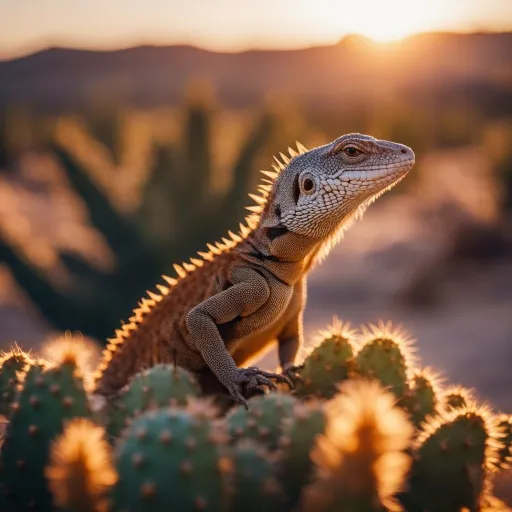
Lizards’ Feeding Time and Habits
Lizards exhibit various feeding patterns and habits, influenced by factors such as species, climate, and resource availability.
Diurnal vs. Nocturnal Lizards
Some desert lizards are diurnal, meaning they are most active during the day, while others are nocturnal, being active mainly at night.
These different activity patterns influence their feeding schedules. Diurnal lizards often forage during the day when temperatures are higher, while nocturnal lizards hunt for prey under the cover of darkness when it is cooler.
Feeding Frequency
Lizards’ feeding frequency can vary depending on factors such as food availability, energy requirements, and body condition.
Some lizards may feed daily, while others consume food less frequently, especially during periods of food scarcity.
Gorging and Fasting Periods
In response to resource availability, lizards may undergo gorging and fasting periods. When food is abundant, lizards may eat to their maximum capacity, storing excess energy for leaner times.
During periods of food scarcity, lizards conserve energy by reducing their metabolic rate and relying on stored reserves until food becomes available again.
Competition for Food
Competition for food resources is a significant factor in shaping lizards’ feeding behaviors and survival strategies in the desert environment.
Intraspecific Competition
Intraspecific competition refers to competition between individuals of the same species. In the desert, where resources are limited, lizards of the same species may compete for prey or plant food sources.
Competition can lead to changes in feeding behaviors, including increased aggression, territoriality, or niche specialization to reduce overlap.
Interspecific Competition
Interspecific competition occurs between different species competing for the same resources.
Desert lizards may face competition from other lizard species and even other vertebrates for prey or preferred plant food sources.
This competition can influence their foraging strategies and potentially drive niche differentiation to reduce direct competition.
Strategies to Overcome Competition
To cope with competition for food, lizards employ various strategies. Some may expand their foraging range, seeking out less crowded areas or exploiting previously unutilized food sources.
Others may shift their feeding behaviors, targeting different prey or adjusting their diets to focus on underutilized plant food sources.
These adaptive strategies allow lizards to reduce competition and maximize their chances of survival.
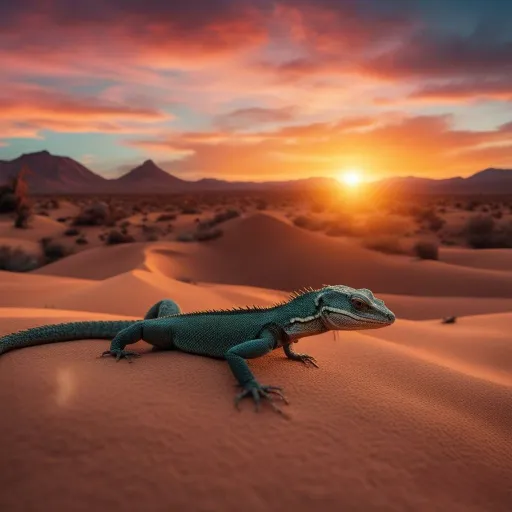
Impact of Climate Change on Lizard Diets
Climate change poses a significant threat to lizards and their diets in the desert. Alterations in temperature, precipitation patterns, and vegetation composition can have profound effects on food availability and species interactions.
Altered Availability of Food Sources
Climate change can disrupt the availability and timing of food sources for desert lizards. Changes in precipitation patterns and prolonged droughts may lead to reduced plant productivity, impacting the herbivorous lizards’ food supply.
Additionally, shifts in insect populations and phenology may affect the insectivorous lizard species, as changes in temperature and rainfall can directly impact insect life cycles.
Changes in Species Interactions
Changes in lizard diets due to climate change can have cascading effects on species interactions within the desert ecosystem.
For example, if herbivorous lizards experience a decline in plant food sources, it may indirectly impact other species that rely on those plants for food or shelter.
Alterations in predator-prey dynamics can disrupt the delicate balance of the ecosystem.
Long-term Implications
The long-term implications of climate change on lizard diets are of great concern. Changes in food availability and species interactions can lead to shifts in lizard population dynamics, including changes in abundance, distribution, and even extinctions.
These impacts have the potential to cascade through the entire desert ecosystem, affecting other organisms and ultimately the resilience of the entire ecosystem in the face of climate change.
Conservation Considerations
To protect lizards and their diets in the desert, several conservation considerations must be taken into account.
Protecting Habitats and Food Sources
Preserving intact desert habitats is crucial for ensuring that lizards have access to their natural food sources.
Protecting vegetation communities and preventing habitat destruction or fragmentation are essential conservation measures.
Restoration efforts aimed at rehabilitating degraded desert ecosystems can also contribute to the conservation of lizard diets.
Managing Invasive Species
Invasive species can have detrimental effects on lizard diets by outcompeting native species for food resources.
Implementing effective management strategies to control or eradicate invasive species is necessary to prevent the displacement or decline of native lizard populations.
Research and Monitoring Efforts
Continued research and monitoring efforts are vital for understanding the impacts of climate change on lizard diets and developing effective conservation strategies.
Long-term studies monitoring lizard populations, their diets, and the availability of food sources can provide valuable data for conservation planning and management.
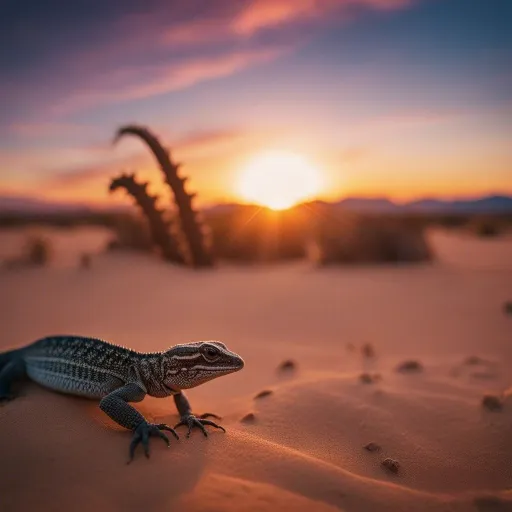
Final Thoughts
In conclusion, lizards in the desert have adapted to a wide range of dietary strategies to survive in the challenging conditions of arid environments.
By understanding their diets and the ecological roles they play, we can better appreciate the complexity of desert ecosystems and the importance of protecting these unique reptiles.
Through conservation efforts and ongoing research, we can work towards ensuring the long-term survival of desert lizards and the preservation of their diets for future generations.


